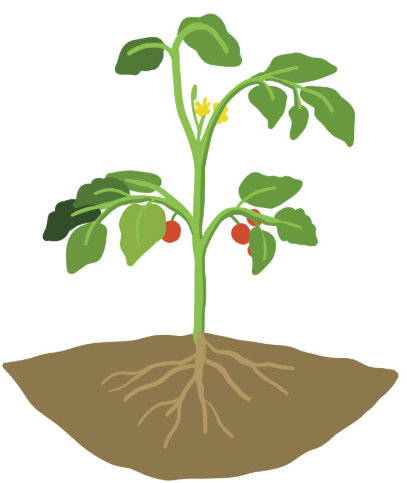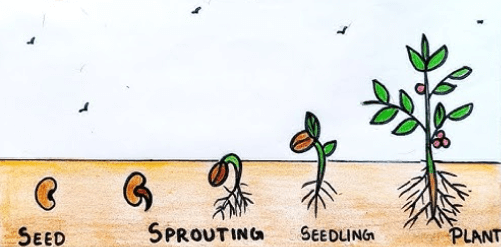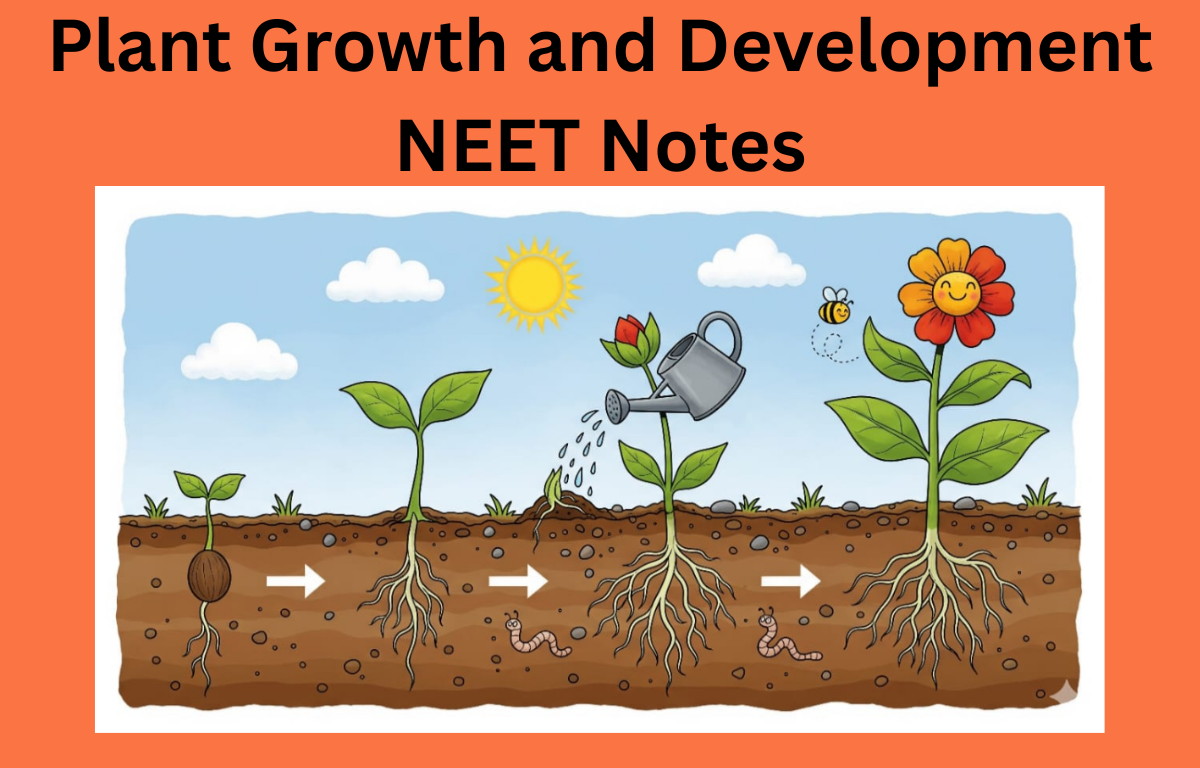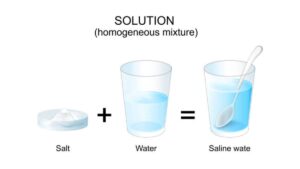Plant Growth and Development NEET Notes: Have you ever thought about how a small seed can grow into a large, green, and leafy plant? The process of the growth and development of plants is fascinating and covers important concepts that all NEET 2026 aspirants are expected to know. Plants go through different stages of seed germination to flowering and fruiting, each of which is controlled by hormones, the environment, and internal processes. These notes summarize the different phases of growth, differentiation, photoperiodism, vernalization, and growth regulators in plants. These notes are designed with easy and simple language, which will help you strengthen your concepts, revise quickly, and prepare strategically for the exam.
Plant Growth and Development NEET Notes
Plant Growth and Development is a very significant topic in the NEET syllabus for the botany section, as it explains how plants grow, mature, and react to their surroundings. In these notes, you will study growth phases or stages, plant hormones, differentiation, photoperiodism, seed germination, and factors affecting development. Each of these will be explained systematically, and students will be able to remember them easily as they are presented in a straightforward manner with clarity.
You will find that understanding this chapter will not just get any student a good score, but also is quite a strong foundational topic for advanced courses in Biology, too! Key diagrams, examples, and important points to remember from NCERT are covered in these notes and appear regularly in NEET. So good preparation in Plant Growth and Development will help initial aspirations of students not only with a better score but also with more confidence in the exam.
Define Plant Growth
Plant growth refers to a permanent, irreversible, and quantitative increase in the size of a plant due to cell division, cell enlargement, and cell differentiation. Growth cannot be reversed once a part of the plant has been cycled to grow. Growth involves internal factors such as plant hormones (i.e., auxins, gibberellins, cytokinins, etc.) and external factors such as light, water, temperature, and nutrients. In plants, growth is unlimited because, in meristems, the tissues of the tip of the plant and stems, new cells are constantly formed throughout the life of the plant, which is why plants exhibit continuous growth during their lifetime. For Class 11 and NEET, it is important to understand plants to facilitate an understanding of plant physiology and how plants adapt, survive, and reproduce.

Characteristics of Plant Growth
Plant growth has unique features that make it different from animal growth. Plant growth is continuous, measurable, and environment-dependent.
- Irreversible Process – Once a cell grows and enlarges, it cannot return to its original size.
- Indeterminate Growth – Many plants grow throughout life because of meristematic tissues in the root and shoot tips.
- Unlimited Potential – Unlike animals, plants don’t have a fixed body size; growth continues as long as conditions are favourable.
- Quantitative and Measurable – Growth can be measured in terms of length, weight, surface area, or volume.
- Cellular Basis – Growth is the result of cell division, cell enlargement, and differentiation.
- Environmental Dependence – Light, water, nutrients, and temperature strongly affect plant growth.
Different Phases of Plant Growth
Plant growth occurs in a sequence of three different phases: Meristematic (Cell Division) Phase, Elongation Phase, and the Maturation (Differentiation) Phase. Each phase is important for the overall development of the plant. Together, all three phases make plant growth a continuous and dynamic process. These phases can be explained as follows:

1. Meristematic Phase (Cell Division Phase)
- This phase takes place in the apical meristems of roots and shoots.
- Cells here are small, actively dividing, thin-walled, and rich in cytoplasm.
- It ensures a continuous supply of new cells for growth.
2. Elongation Phase
- Found mainly behind the meristematic region.
- Cells absorb water and enlarge, leading to an increase in the length of roots and shoots.
- Cell wall loosens and expands, allowing elongation.
3. Maturation (Differentiation) Phase
- Cells stop elongating and undergo differentiation to form specific tissues like xylem, phloem, or epidermis.
- This phase gives the plant its final structure and function.
- Root hairs and other permanent structures appear here.
Necessary Conditions for Plant Growth
For healthy and proper growth, plants need several essential conditions. Without these conditions, the plant growth may stop or remain incomplete.
| Necessary Conditions for Plant Growth | |
| Conditions required | Description |
| Water | Maintains turgidity for cell expansion and is a medium for biochemical reactions. |
| Nutrients | Minerals like nitrogen, phosphorus, potassium, and magnesium are crucial for building tissues. |
| Temperature | Moderate temperature is required; extreme heat or cold can slow or stop growth. |
| Light | Provides energy through photosynthesis and influences flowering, germination, and photoperiodism. |
| Oxygen | Required for respiration, which releases energy needed for growth. |
| Plant Hormones | Act as internal signals to regulate every stage of development. |
Plant Growth Regulators (PGRs)
Plant growth and development are controlled by various hormones, which are also known as Plant Growth Regulators. They act in very small amounts but have a powerful effect.
1. Auxins
- Promote cell elongation and root initiation.
- Help in phototropism (bending towards light).
- Used in agriculture for weed control and rooting of cuttings.
2. Gibberellins (GA)
- Stimulate stem elongation and leaf expansion.
- Break seed dormancy and help in germination.
- Induce bolting in rosette plants like cabbage.
3. Cytokinins
- Promote cell division.
- Delay leaf senescence (ageing).
- Encourage shoot growth in tissue culture.
4. Abscisic Acid (ABA)
- Known as the stress hormone.
- Induces seed dormancy and helps plants survive drought.
- Promotes leaf fall and prevents wilting.
5. Ethylene
- Stimulates fruit ripening.
- Helps in senescence and flowering in some plants.
- Promotes abscission (shedding of leaves and fruits).
Define Plant Development
Plant development is an overall process by which a plant transitions through the different stages of life – from seed germination to vegetative growth, flowering, fruit development, and finally senescence. It’s not only about an increase in size (growth) but also how cells and tissues acquire different functions (differentiation) and how the plant completes its life cycle.
Developmental Stages in Plants
Plants pass through different sequential stages in their life cycle. Each stage is regulated by internal hormones and external factors. These stages together define the complete developmental journey of a plant, from seed to maturity and ageing.
1. Seed Germination
- The life of a new plant begins with germination.
- The seed absorbs water (imbibition), swells, and the embryo becomes active.
- The radicle (root) emerges first, followed by the plumule (shoot).
- Germination ensures that the plant shifts from a dormant state to active growth.
2. Vegetative Phase
- In this stage, the plant focuses on building its roots, stems, and leaves.
- Photosynthesis starts actively, which provides energy for further development.
- The duration of this phase varies among species (short in crops like wheat, long in trees).

3. Reproductive Phase
- The plant shifts from the vegetative to the flowering stage.
- Controlled by photoperiodism (day length) and vernalisation (low temperature in some plants).
- Flowers are formed, pollination occurs, and fruits with seeds develop.
- This stage ensures continuity of life by reproduction.
4. Senescence
- The ageing stage of plants.
- Cells lose their function, leaves may turn yellow, and metabolic activities decline.
- Senescence is essential as it helps in seed dispersal and nutrient recycling in nature.
Difference Between Plant Growth and Plant Development
Although closely related, Plant growth and development are not the same:
| Plant Growth Vs Development | |
| Plant Growth | Plant Development |
| Refers to the irreversible increase in size, number, or mass of cells. | Refers to the qualitative changes a plant undergoes during its life cycle. |
| Example: A stem increasing in length or a leaf becoming larger. | Example: Transition from vegetative to flowering stage, or xylem cells differentiating for conduction. |
| It is quantitative (can be measured in cm, gm, surface area, etc.) | It cannot be measured in numbers but understood by stages. |
| Mainly involves cell division and enlargement. | It includes differentiation, dedifferentiation, and redifferentiation |
| Plant Growth = Increase in size/number (quantity). | Plant Development = Progression of life stages and functions (quality) |










 NEET Preparation Strategy 2026: Detailed...
NEET Preparation Strategy 2026: Detailed...
 Free NEET Sample Papers 2026 PDF | Downl...
Free NEET Sample Papers 2026 PDF | Downl...
 Salt Analysis NEET Notes, Check Importan...
Salt Analysis NEET Notes, Check Importan...









